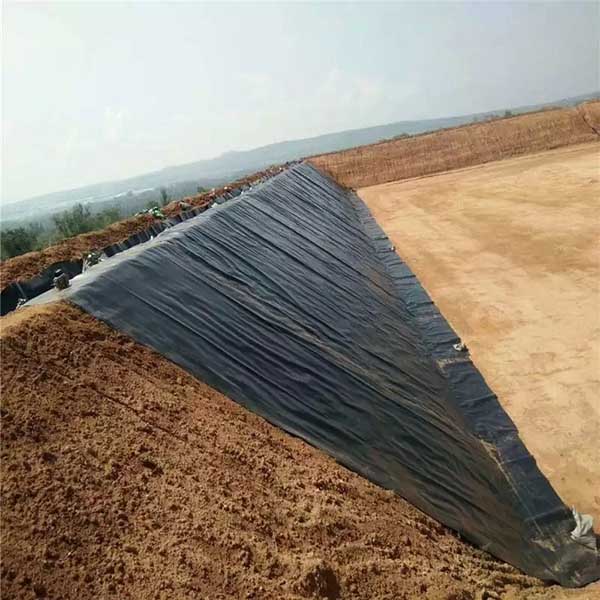As a widely used anti-seepage material in engineering fields such as water conservancy, environmental protection, and transportation, the integrity of geomembrane is crucial for the normal operation of the project. However, in the long-term use process, geomembranes may be damaged due to various factors, such as mechanical damage during construction, tensile rupture caused by uneven settlement of the foundation, and aging damage caused by ultraviolet radiation, chemical erosion, etc. Therefore, it is essential to master effective repair methods.
Patch repair method is a commonly used method for small area damage of geomembrane. Firstly, accurately measure the size of the damaged area to ensure that the cut patch material is of appropriate size. Generally, each side of the patch should be 10-20 centimeters larger than the damaged area. Patch materials should be selected from products that are the same as or have good compatibility with the original geomembrane material to ensure the repair effect. Carefully clean the damaged areas and patch surfaces with a clean cloth or brush, remove dust, oil stains, and other impurities, and then evenly apply specialized geomembrane adhesive. Accurately cover the patch on the damaged area, use tools such as rollers or rubber hammers to press the patch from the center to the surrounding area, remove bubbles, and ensure that the patch is tightly adhered to the damaged geomembrane, ensuring a firm bond.
When the damaged area is large, the splicing repair method is more suitable. First, cut off the damaged parts along the perimeter of the damaged area in a regular manner, so that the cut edges are neat and smooth. Prepare a new geomembrane with the same specifications as the original one and cut it according to the required dimensions for the project. The new geomembrane is spliced with the remaining intact original geomembrane, and the splicing methods mainly include hot welding and chemical bonding. Hot welding is the use of professional welding machines to melt the contact surfaces of geomembranes through heating, and then apply a certain pressure to fuse them together. During the welding process, temperature, speed, and pressure parameters must be strictly controlled to ensure welding quality. Chemical bonding is the use of chemical adhesive, evenly applied to the joint, and then tightly pressed together with two pieces of geomembrane, ensuring that there are no bubbles or gaps at the joint.
After the repair is completed, quality inspection is indispensable. The commonly used detection methods include inflation method and vacuum method. The inflation method involves inflating the repaired geomembrane area and observing pressure changes. If the pressure remains stable for a certain period of time, it indicates good sealing at the repair site; If the pressure drops rapidly, it indicates the presence of a leak point and needs to be rechecked and repaired. The vacuum method involves covering the repair area with a sealed cover, evacuating and observing for any air entering. If there is, it indicates damage and requires further treatment.
There are various methods for repairing geomembranes, each with its own applicable scenarios and operational points. In practical engineering, repair methods should be reasonably selected based on factors such as damage and engineering conditions, and construction and testing should be strictly carried out in accordance with operating standards to ensure the anti-seepage performance of geomembranes and the long-term stable operation of the project.
Post time: May-08-2025



